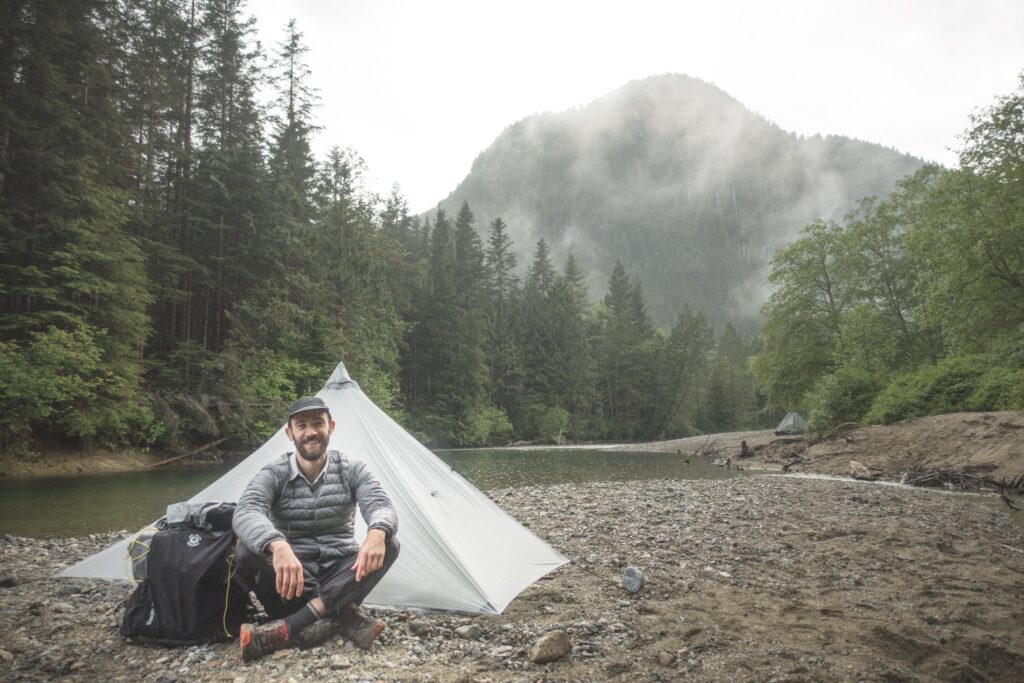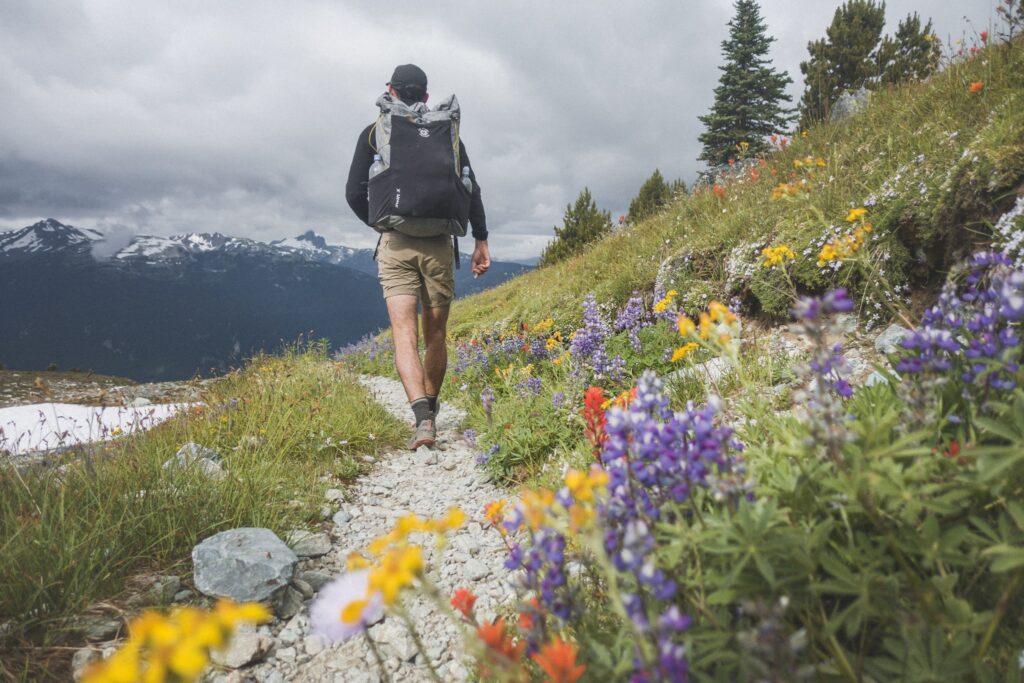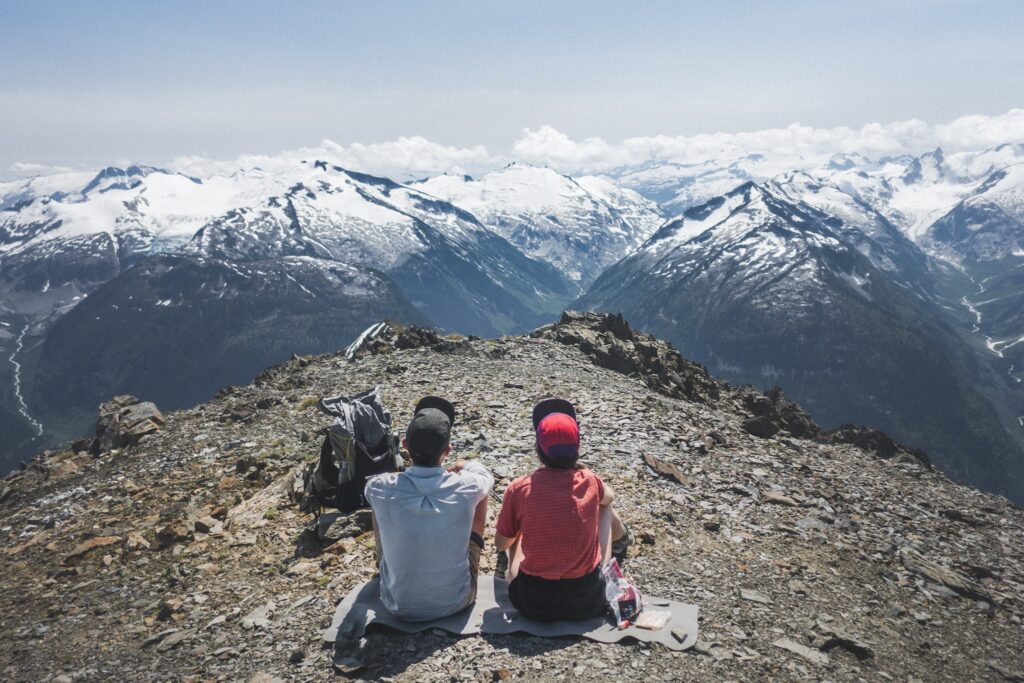Ultralight Backpacking 101: 7 Ways to Lighten your Pack for Free

One misconception that’s shared by many people new to backpacking is that the key to going ultralight is spending money on the most expensive, most technologically-advanced gear on the market. That, and foregoing the comforts of a good night’s sleep in favour of a lighter pack.
But I’m writing this post to let you know that fancy materials, shocking sticker prices, and sleepless nights are not at the heart of ultralight backpacking. The heart of this style is simply thinking critically about what you do and don’t need on a given trip, and bringing only the appropriate pieces of gear. What that usually amounts to is knowing what you can leave at home. And since leaving things at home doesn’t cost you a cent, all of the strategies I’ll list below will allow a beginner backpacker to lighten their load by as much as several pounds completely free.
Ultralight Philosophy: Ounces Add up to Pounds
As you read through my tips below, you may be tempted to disregard them because each can only help save you a few ounces at a time. You may think “These strategies aren’t worth it just to save a few ounces. I won’t even notice the difference!” But one of the cornerstone philosophies of ultralight backpacking is based on the fact that ounces add up to pounds. And if you can save just a few ounces from each of your cook set, water supply, clothing, and sleep set, that can quickly add up to a couple of pounds saved off your back, which will result in a noticeably more enjoyable hiking experience.

1. Strip Down your Cook Set and Dinnerware
Before their first trip, many beginner backpackers will buy a full camp kitchen kit complete with a cook set, dinnerware, and utensils, and they’ll bring the entire thing “as-is” on their first few trips. I know that’s what I did. But before your next hike, you should consider the food you plan to cook and eat, and whether you actually need the entire kit.
Here are a few specific things to think about:
- If you’re cooking in a pot, you can eat straight out of it (or a Ziploc bag for dehydrated meals) instead of transferring your food to a separate bowl or plate. If you’re sharing meals with a partner then one of you can use a bowl or mug while the other eats out of the pot.
- Instead of a dedicated mug for coffee or tea, you can drink it out of your pot or the same mug you ate dinner out of.
- You may own a full set of spoon, fork, and knife, but look over the food you’re bringing and consider whether you need to pack all three utensils.
- Most of the cook sets you buy from the store come in a carrying case or bag of some kind, but you probably don’t need to bring that on your trip.
- Consider using a “disposable” water bottle made by Smart Water, Coca-Cola or other brand you can find at any convenience or grocery store. These bottles are lighter than all consumer water bottles. I don’t recommend the use of single-use plastics, and as long as you take care of them, these disposable water bottles can be refilled and reused for thousands of miles.
2. Avoid Extra Food or Packaging
Bringing too much food is one of the most common mistakes by beginner backpackers. I can’t tell you how many times I’ve acquired entire meals in the backcountry by strangers being crushed by the weight of their excess food, eager to give it away to anyone that would take it. While nobody wants to go hungry, too much food is just that: too much.
Ultralight Philosophy: Packing our Fears
Leaving the city and heading out into the wilderness can be a scary experience for many different reasons. The relative solitude and lack of access to civilized resources mean that you have to be self-sufficient, and each of us imagines something different when we worry about what could go wrong out there. Dehydration, hunger, Lyme disease, hypothermia, bears, and things that go bump in the night are all very real possibilities in different areas. The important thing is to think critically about which of these are realistic problems on a given trip, and to not over-prepare for the others just because you have nightmares about them. Pack for the scenarios that are likely to arise in the location and conditions that you’ll be in, don’t pack your fears.
Some strategies to reduce excess food weight include:
- Instead of just throwing a bunch of food into your shopping cart, make a tentative plan for the number of meals you need to pack. Once you know how many breakfasts, lunches, and dinners you’ll be eating on trail, you can more accurately bring the right amount of food.
- Just because an item comes in a certain size at the store, it doesn’t mean you need to bring the entire thing on your trip. Scoop out some peanut butter from the jar and leave it in a container at home if you don’t think you’ll eat the whole thing on trail.
- Go through your food before your trip to see if you have any any excess packaging. A lot of packaged food comes inside a plastic bag within a box, and you don’t need both. Items that come in heavy glass bottles like olive oil and wine should be transferred to lighter plastic bottles.

3. Bring the Right Amount of Toiletries
Toothpaste, hand sanitizer, sunscreen, and bug repellent are common essentials for backpacking trips, and you may have other products you like to bring. But beware of how much your toiletry kit can start to weigh once all of this stuff adds up. Even the travel-sized versions of these items sold in stores far exceed what you’ll need if you’re out for a night or two. Transfer small amounts of each to Ziploc bags or dropper bottles for shorter trips.
This strategy of course includes the laughable yet iconic ultralight strategy of cutting your toothbrush in half. Do you really need the whole handle?
4. Research the Route’s Water Sources
A common mistake by beginner backpackers is to fill their wattle bottles up to capacity before leaving home or the trailhead without thinking about whether that amount is necessary. Because a litre of water weighs 2.2 pounds, this mistake can add up to weigh you down fast. Instead, you should take a look at a map of your route and only carry the amount of water you need to get you to the next source. The rule of thumb is that a litre of water will last you 4-7 miles. The lower end is for hot temperatures, hard terrain, and slower hikers. The higher end is for milder temperatures, easier terrain, and faster hikers.
When looking at maps for water, remember to consider the seasonality of each source. Some sources flow in the spring but dry up by late summer and fall. Comments on the Guthook app or any website where you can read recent trip reports are good sources of this information.
5. Reconsider your Change of Clothes
In our civilized life, we’re used to changing our clothes every day, and some beginner backpackers will bring this habit with them to the backcountry. The reality is that you don’t really need to change your clothes when you’re hiking. Being dirty is socially acceptable out there, and most smelliness will become unnoticeable by you and all those around you since it happens so gradually and everyone on trail will have it in common.
I like to bring an extra pair of socks so that I can keep one pair washed and drying out while the other is on my feet. This is an important part of keeping my feet healthy and blister-free. The same tactic can be applied to bringing an extra pair of underwear.

6. Utilize Multipurpose Items
One of the most creative ways you can reduce your pack weight is to bring items that can serve multiple functions, eliminating the need for an additional piece of gear. The opportunities here are endless, and I would encourage you to take a look at your own kit and brainstorm. But I’ll give you a few commonly used examples of this principle for inspiration:
- A bandana or Buff can protect your neck from the sun, bugs, and cold, but also be used as a rag or lightweight towel.
- A foam sleeping pad can be used throughout the day to sit on, eliminating the need for a separate sit pad or chair. It can even serve as a yoga mat.
- You can sleep with your feet on your backpack, meaning you only need a sleeping pad long enough for your torso. Shortening a foam pad is straightforward to do with a pair of scissors, but is actually simple enough to do at home for inflatable pads too.

7. Evaluate Miscellaneous Items
Strategy #7 is kind of just a catch all for anything I haven’t covered above. Go through your entire kit and for each item, question whether you’re likely to actually need it. In addition, at the end of every trip, evaluate your gear choices based on whether or not you found the things you brought useful.
Some of the most common pitfalls I see are:
- Knives: Are you really going to need that Crocodile Dundee-sized blade on your hike, or will your spork suffice to spread your peanut butter and slice your block of cheese? For almost all backcountry purposes, the smallest Swiss-army knife or pair of scissors is the most you’ll ever need for cutting things.
- Tent Footprints: Many outdoor retailers will try to sell you an expensive and relatively heavy special nylon footprint to protect the bottom of your tent. For a fraction of the cost and less weight, you can use Tyvek (lighter) or polycro (lightest) instead. Both are available from most hardware stores.
- First Aid Kits: A first-aid kit is an essential piece of gear, but if you bought yours as a unit from the store, it probably came with a few items that are inappropriate for your upcoming hike. Go through yours and see if there are some things that can be left at home. Andrew Skurka has a great post on this if you’re unsure of where to begin.
- Wallet: Most people walk around town carrying dozens of loyalty and membership cards to their local grocery store, library, and all other sorts of places. You can leave most of these at home and bring only your ID, credit or debit card, and maybe some cash in a Ziploc bag. Same strategy goes for your keychain.
In Conclusion
Despite some popular conceptions, the heart of ultralight backpacking isn’t spending money on fancy materials or forgoing comforts for the sake of a tiny pack. The core philosophy of the hobby is thinking critically about what gear and supplies are appropriate for each trip. We can all agree that carrying a lighter bag makes a hike more enjoyable, so why not take the time to see if you can lighten your load a little before your next trip? Especially when it’s free!
Once you’ve followed the steps above, if you’re still interested in buying some specialized ultralight backpacking gear, head to my gear list for some ideas.